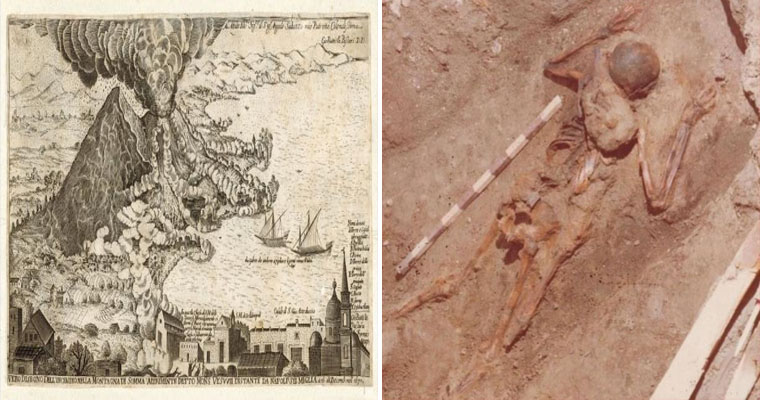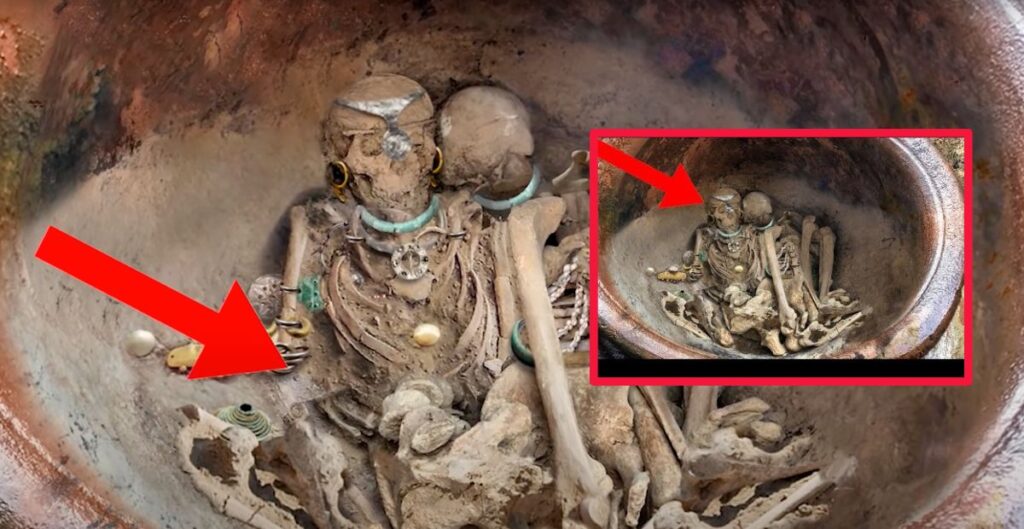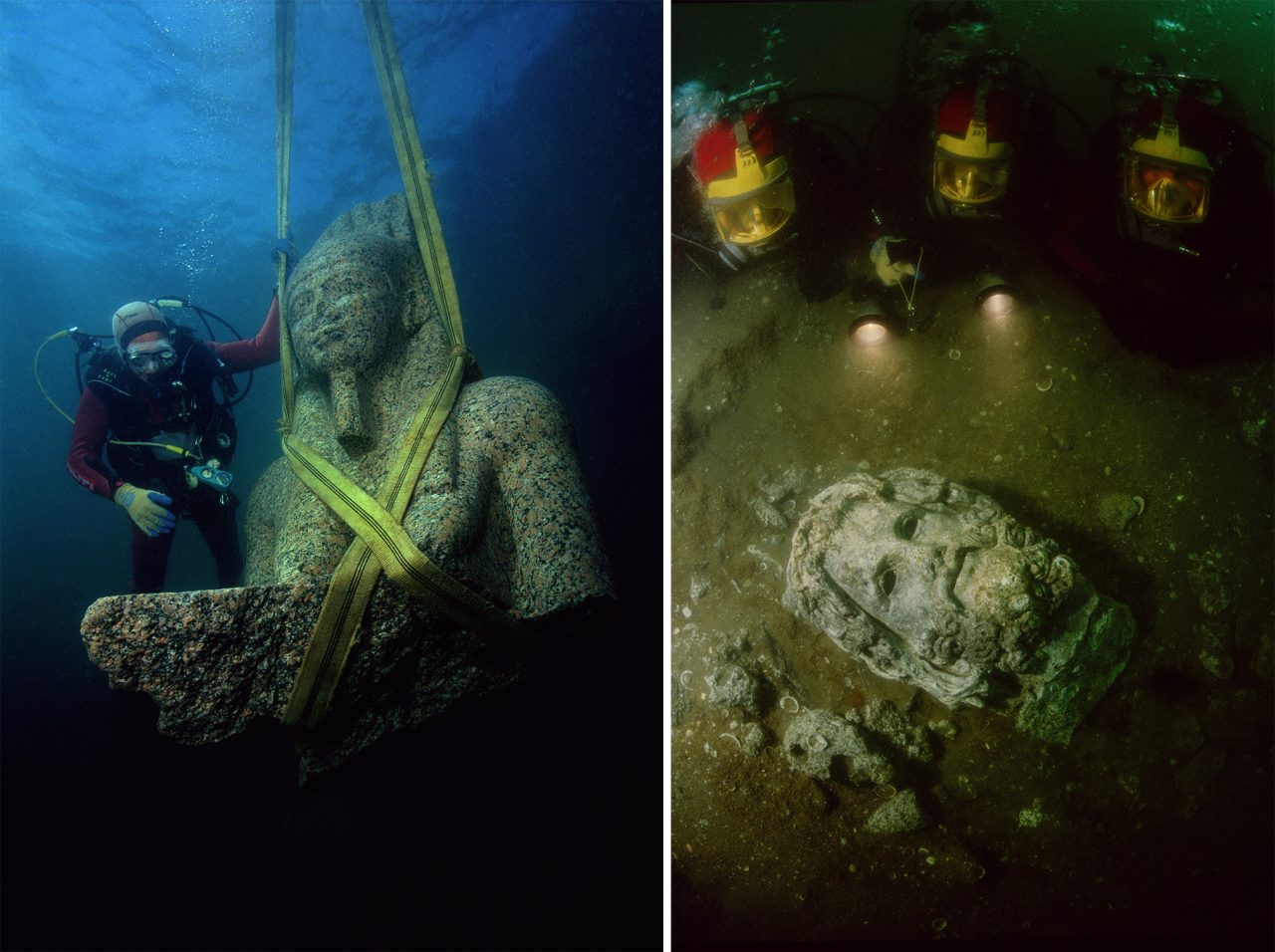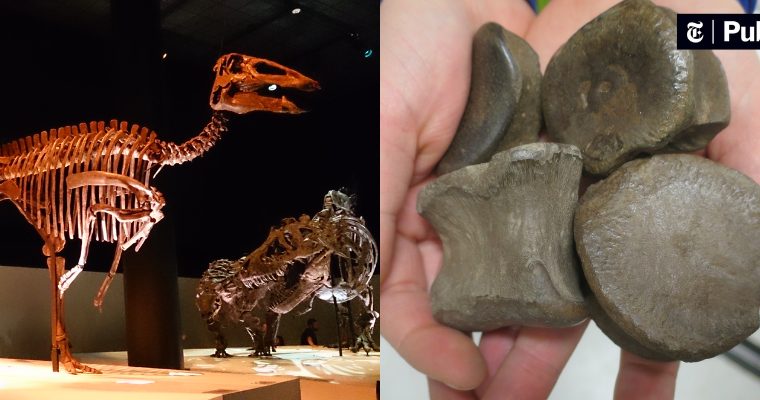Massive, exceptionally well-preserved cladoxylopsid tree trunks found in Xinjiang, China, have revealed an interconnected web of woody strands (xylem) within the trunk of the tree that is much more complex than that of the living trees.
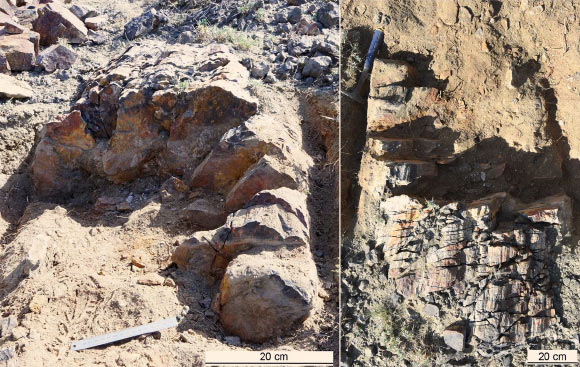
Xinicaulis lignescens. The largest silicified trunk in the field, with a maximum diameter of 70 cm: oblique transverse (left) and lateral (right) views. The trunk is about 1 m long in preserved length. Image credit: Xu et al, doi: 10.1073/pnas.1708241114.
The xylem is responsible for conducting water from a tree’s roots to its branches and leaves. In the most familiar trees it forms a single cylinder to which new growth is added in rings year by year just under the bark. In other trees, notably palms, xylem is formed in strands embedded in softer tissues throughout the trunk.
Earth’s earliest trees (Cladoxylopsida) had their xylem dispersed in strands in the outer 5 cm of the tree trunk only, whilst the middle of the trunk was completely hollow, according to paleontologists who analyzed silicified trunks of the Late Devonian (374 million years ago) cladoxylopsid tree Xinicaulis lignescens.
“The narrow strands of Xinicaulis lignescens were arranged in an organized fashion and were interconnected to each other like a finely tuned network of water pipes,” the researchers said.
“The development of these strands allowed the tree’s overall growth. Rather than the tree laying down one growth ring under the bark every year, each of the hundreds of individual strands were growing their own rings, like a large collection of mini trees.”
“As the strands got bigger, and the volume of soft tissues between the strands increased, the diameter of the tree trunk expanded.”
“The connections between each of the strands would split apart in a curiously controlled and self-repairing way to accommodate the growth.”
“At the very bottom of the tree there was also a peculiar mechanism at play — as the tree’s diameter expanded the woody strands rolled out from the side of the trunk at the base of the tree, forming the characteristic flat base and bulbous shape synonymous with the cladoxylopsids.”
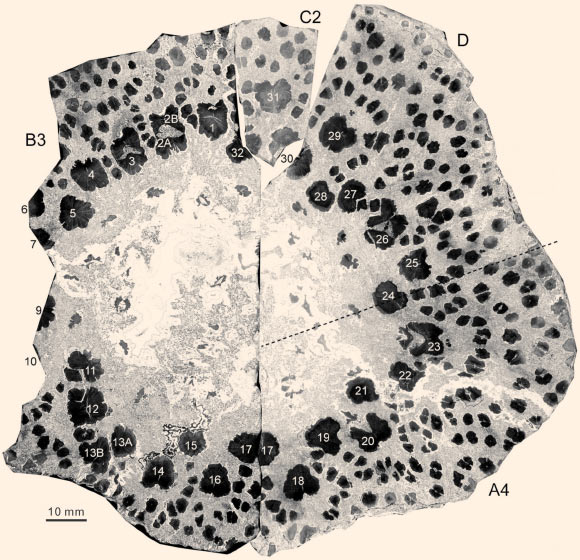
General structure of a small trunk specimen of Xinicaulis lignescens. Transverse plane through the small trunk, showing the three naturally fractured parts and the subsequent longitudinal saw cut (dashed line) separating part A from part D. Note at least 33 cauline xylem strands (numbered 1-32, 13A, and 13B). Of the large number of roots in the outer cortex, most have terrete to four-lobed primary xylem strands surrounded by secondary wood. A few toward the outside are star-shaped with secondary wood only at the tips of the arms. About 30 medullary strands, of irregular shape, are visible in the pith. Parenchyma extends to the center of this small trunk. Image credit: Xu et al, doi: 10.1073/pnas.1708241114.
“There is no other tree that I know of in the history of the Earth that has ever done anything as complicated as this,” added co-author Dr. Chris Berry, of Cardiff University.
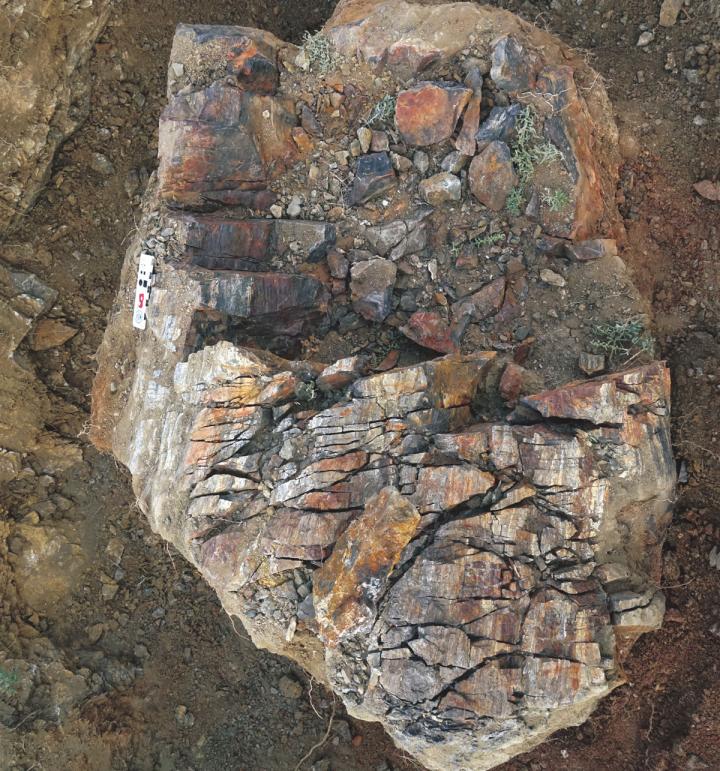
“The tree simultaneously ripped its skeleton apart and collapsed under its own weight while staying alive and growing upwards and outwards to become the dominant plant of its day.”
“By studying these extremely rare fossils, we’ve gained an unprecedented insight into the anatomy of our earliest trees and the complex growth mechanisms that they employed.”
“This raises a provoking question: why are the very oldest trees the most complicated?”
Source: sci.news



